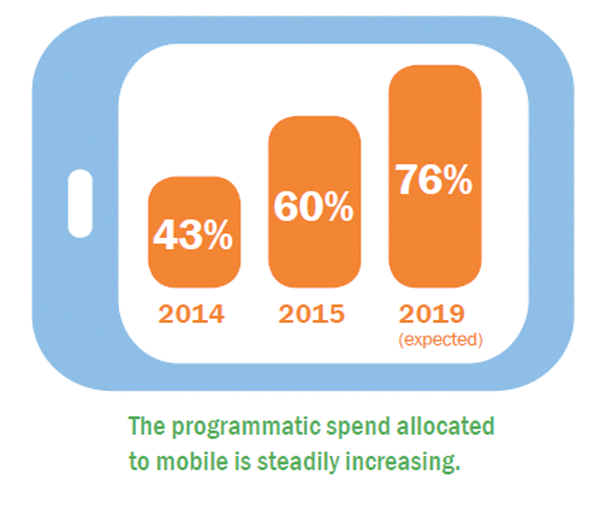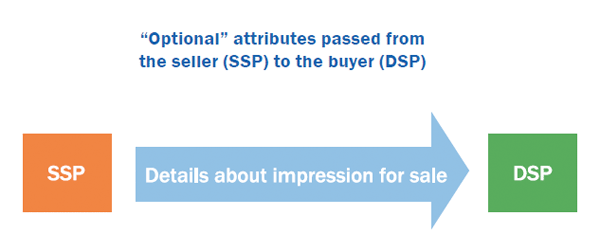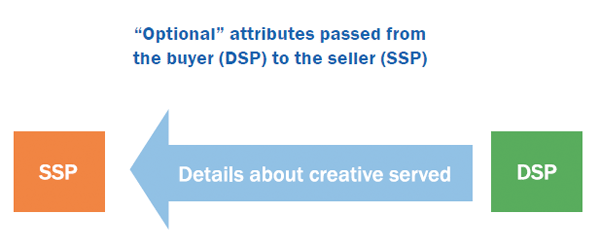Programmatic Transparency is a Two-Way Street Part 2 [INSIGHT]
March 17, 2016
![]() For AAM’s 2016 Guide to Media Transparency, we talked to leaders from all sides of the industry to answer one key question:
For AAM’s 2016 Guide to Media Transparency, we talked to leaders from all sides of the industry to answer one key question:
How do we build more accountability and transparency between marketers, media agencies, technology vendors and publishers for the long-term success of the media industry?
Each section of the guide delves into major media topics, outlines questions to ask your industry partners, and gives you the practical advice needed to be confident that your organization is transacting with trust.
In Part 1, we found out how to build more accountability and transparency between marketers, media agencies, technologies and publishers.
In Part 2, below, we look behind the scenes of programmatic advertising.
What is media transparency?
In its simplest form, media transparency can be broken into two main points:
- Advertisers know where their ads are running and what they are paying each part of the digital supply chain to get their ads in front of their targeted audience.
- Publishers understand the nature of the creative running on their properties.
Programmatic advertising technology has revolutionized how ads are bought and sold. As a result, it has changed the way ads are served to consumers and how they interact with those ads. It allows advertisers to instantly target audiences at scale by demographics, shopping behavior, location and more. It helps publishers sell unsold inventory. And it’s becoming the standard for digital media buying as U.S. programmatic digital display ad spending is up nearly 50 percent over 2014, hitting $15.4 billion in 2015, accounting for the majority of display ad spending.

The programmatic spend allocated to mobile is steadily increasing and is expected to reach 76% in 2019.
“Programmatic is necessary, and it is here to stay,” explained Jeff Holecko, experience planning manager for Kimberly-Clark. “For publishers, it allows for efficient yield optimization, and it allows advertisers to pay what we want for very specific target segments. It benefits the entire ecosystem, but it requires a significant amount of attention to ensure quality and mitigate fraud (human and bot).”
While programmatic has brought efficiencies, cost savings and benefits, it has also opened the door to issues related to bad actors and flawed systems that are not as evident in a direct environment.
“We see operations and numbers that don’t make sense, and we have to hunt down what the issues might be and talk to other vendors,” explained Ted Boyd, CEO of Brandworks Advertising. “It can be quite time-consuming. There’s a certain irony that the more automated we get, the more we have to go back and validate when we discover something has gone awry.”
Dominik Majka, senior vice president of digital strategy at MediaCom Canada, explained that fraud is top of mind as an industry issue now that programmatic has intensified.
“Fraud has clearly been around longer than programmatic but it’s never been as prominent as it is right now,” Majka said. “It’s the number one most concerning element in the media industry today.”
When ads are bought and sold in milliseconds, how can each side of the industry better ensure more transparency?
A 2016 survey by the Association of National Advertisers found that of the 79% of advertisers who bought programmatically in the past year, 70% were concerned about the levels of fraud in those buys.
Behind the Scenes of Open RTB: The OpenRTB Ecosystem is Complex, Costly and Lacks Transparency

Let’s start with the basics of what happens in an open real-time bidding (RTB) environment.
Bid Request
Optional attributes passed from the seller (SSP) to the buyer (DSP)

First, a consumer visits a page with open inventory, which triggers a real-time auction for that ad space. A bid request travels from the sell-side platform (SSP) through the exchange to the demand-side platform (DSP). That request passes optional details about the impression for sale, such as:
- Channel (website or app)
- Location (page level, domain level, silent)
- User information (segment, audience)
- Device (desktop, smartphone, tablet)
Bid Response
Optional attributes passed from the buyer (DSP) to the seller (SSP)

The DSP then looks at all campaigns it is managing to determine whether it will bid on the impression on behalf of the buyer. If it does bid, the DSP communicates information back to the SSP, including:
- How much the buyer is willing to pay
- Advertiser domain
- Creative taxonomy (e.g., auto vs. insurance)
- Creative rating (e.g., all audiences or mature audiences)
Win Notice
The bid request and response go back and forth between the SSP and a number of DSPs until a winning bid is determined. The winning ad is then served to the user on that page or app.
Paving a Two-Way Street for RTB Transparency
With so many different players in the RTB ecosystem handling bid requests and responses, navigating the digital supply chain, understanding outcomes and asking the right questions can be challenging for all sides of the industry.
“Unfortunately, programmatic is largely spreadsheet-driven marketing,” Majka explained. “You did get good numbers, but what do those numbers actually signify? What do they represent? When it comes to marketing decision making, you need to know more. You need to know inventory sources, you need to know about those audiences and if somebody doesn’t provide that conversation at every level of information sharing, then it becomes a bigger issue.”
Transparency is a two-way street. Whether you are a publisher or buyer, you have an opportunity to ask for more transparency and you need to work with your vendors to make sure it happens.
“Some of the issues in programmatic revolve around a lack of transparency and awareness,” explained Steve Guenther, vice president of digital services for AAM. “The OpenRTB Specification allows for sellers to provide details such as the location of the ad and the audience, and for buyers to provide details about the creative. If either side doesn’t provide enough detail, the other has the opportunity to back out. But these attributes are optional in the current spec. It’s up to the marketplace to step up and require the level of transparency it wants.”
TAG’s Inventory Quality Guidelines now highlight the realities of real-time bidding and programmatic buying. These guidelines outline minimum disclosures for more transparent communication to build that two-way transparency between buyers and sellers. Sellers disclose the characteristics of the media they’re selling. Buyers disclose how much they’re willing to pay and the type of ad they’re running.
“Putting parameters around the quality of inventory—what goes into the exchange and what comes out—really makes sense,” Boyd said. “With IQG you have a common understanding across the ecosystem of what quality means. The industry needs a clearly focused initiative around those two things because without transparency, how do you know that you have quality? You don’t. It really helps to remind people of that constantly.”
The Benefits of Premium Programmatic
Beyond the RTB environment, publishers and buyers are also engaging in other forms of programmatic media buying such as private marketplaces (PMP) to execute safe programmatic media buying.
“One of the safest ways to execute programmatic is working with trusted partners. This is where the strong relationships between publishers and advertisers benefits our brands,” Holecko said.
Guenther explained that one of the benefits of a PMP is the more direct relationships compared to the RTB space.
“There is more transparency by default in a PMP because it’s closer to a direct relationship, and you should know all of the players,” he explained. “But at the end of the day, you still need to make sure ads are served and measured properly. Whoever is involved in that transaction should still be audited.”
Programmatic advertising is also expanding to more traditional media. Time Inc. was the first to pioneer print programmatic in 2015. McClatchy, for example, has an in-house programmatic team and also works with the Local Media Consortium for programmatic selling.
“It’s one of the fastest growing revenue categories for us,” explained Dan Schaub, corporate director of audience development at McClatchy. “We’re always looking for services, solutions and features that make it easier to meet the needs of retailers and advertisers.”
The Globe and Mail decided to not be part of the open network to lower the probability of being impacted by issues like ad fraud. While the publisher is interested in automation’s ability to more efficiently serve clients, it knew it needed to be aware of the technologies that are allowed to access its inventory to serve that automation.
“It’s 100 percent about the quality,” explained Cynthia Young, head of audience for The Globe and Mail . “Just as much as we care deeply about the quality of our content, we care deeply about the quality of our audience and the content they receive. We want to ensure that the ads placed on our site are from quality brands that have specifically selected our site. There are many different ways in which a lot of nonpublisher content and ads can appear on publisher sites, we just don’t allow those networks access to our inventory. It’s a promise we make to our readers.”
Young explained that they have a conversation about the results that each advertiser wants so The Globe and Mail can focus on delivering what they expect, which is driven by transparency in measurement.
“Part of the positioning of being a safe and premium place to advertise is no different than the position The Globe and Mail has always had. The fact that it’s digital is just the mechanism of how we’re delivering it. We’ve always stood behind audited reports on circulation delivery and we stand on the same kind of principles with digital. The auditing tools have changed and continue to change.”
Holecko explained that premium publishers with quality content can benefit from using automation in a safe manner.
“There is an opportunity for those trusted publishers to create deals and packages that deliver quality human, viewable inventory,” he said. “There are a lot of partners doing this today, and I think it is just going to increase.”
Holecko continued: “There really is an opportunity to transact with trust, and that’s where premium publishers benefit. At the heart of our industry has always been advertiser, agency and publisher relationships. At times we disagree, but we find compromises for the benefit of our clients and the industry.”
The Takeaways for Transparency
There are tools and approaches you can use to make sure you get the level of transparency you want. We see three key areas that all organizations should address.
1. Know your options and discuss the level of transparency your organization wants.
First, talk with your team to understand what level of transparency your organization requires. If you are a buyer, do you want to know where your ad is running at the site level? If you are a seller, do you want to know what type of ads are running on your site? What controls do you have in place to ensure that the level of transparency that you’re looking for is reflected in the bid request or or the bid response? Only then can you instruct your DSP or SSP to respond accordingly.
2. Decide how much transparency you want to provide.
Transparency goes both ways, so both buyers and sellers should consider how much information their organization wants to provide their partners. For sellers, what information about your site and users do you want to share? For buyers, what information can you provide sellers about the ad that will be served?
3. Work with certified vendors and ask questions.
Vendors that have been certified to IAB, MRC or TAG standards have been through rigorous auditing and testing to make sure they have reliable controls and processes in place to ensure that their systems are functioning correctly. Ask your vendors if they are certified. To what standards? Do they have a compliance officer? What controls do they use to ensure their systems and processes are functioning? And most importantly, ask for their Description of Methodology, which will provide even more information around their processes and procedures.
Programmatic is just the beginning. Publishers, advertisers, agencies and technology vendors are facing issues of viewability, ad fraud and ad blocking. In Part 3, we’ll hear how all sides of the industry are bringing clarity to viewability measurements.




























